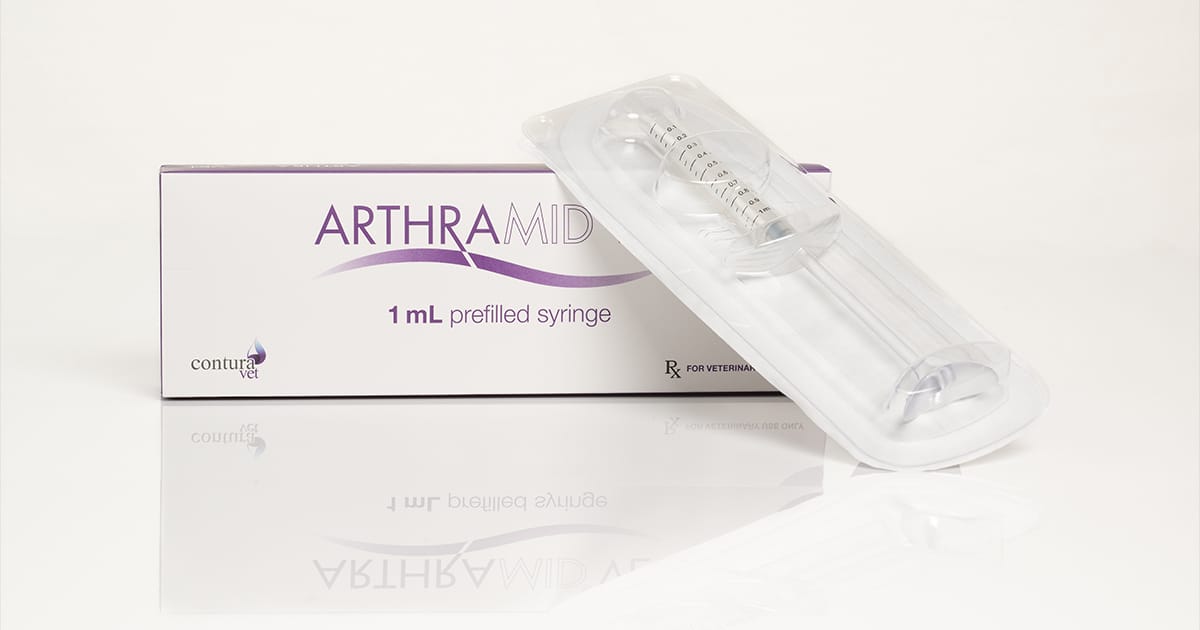A pilot study to assess the efficacy of 2.5% iPAAG in 20 Labrador Retrievers with Elbow Dysplasia (2017-2018) and associated Osteoarthritis.
Background:
20 Labrador Retriever dogs with moderate to severe elbow dysplasia and osteoarthritis (OA) who were clinically lame were enrolled into the pilot study after undergoing veterinary diagnostic imaging. This included radiography, computed tomography and arthroscopy.
Treatment:
1ml of 2.5% iPAAG was injected into the worst elbow joint via intra-articular injection. Response to the treatment was evaluated by Gait4Dog gait analysis, HALO goniometry, AimOA and clinical findings.
Outcome:
2.5% iPAAG significantly improved the lameness during the first 4 weeks after treatment in 75% of patients (P<0.05). Elbow flexion (P=0.04), pain parameters (P=0.002) and limb function (P=0.001) also significantly improved. Gait analysis showed a significant improvement in weight bearing pressure between baseline and week 4 (P=0.007).
Study Limitations:
Several limitations arose which need to be addressed in future studies. Variables such as age range, grades of OA, degree of lameness, exercise levels, diet and weight loss during the study period should be controlled. Longer multi-centred studies with randomization, double blinding and suitable controls are essential and are being commissioned in Europe at present.
Conclusion:
The major finding of the pilot study is that 2.5% iPAAG significantly improved lameness, function and pain parameters indicating effective symptomatic treatment of osteoarthritis associated with elbow dysplasia in dogs. Further studies that maximise data obtainable from joints treated with 2.5% iPAAG will continue to build on the mounting evidence that AV is a novel treatment option for OA in animals.


